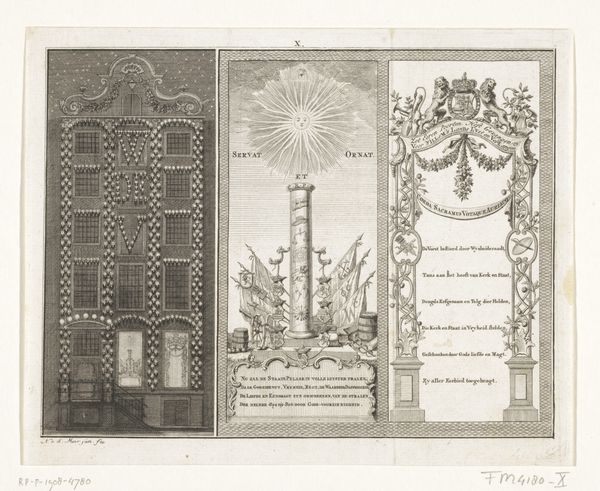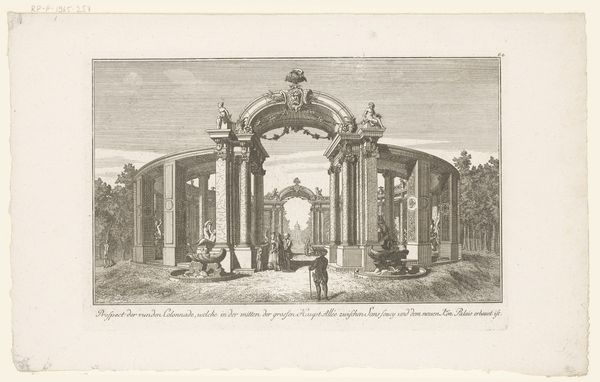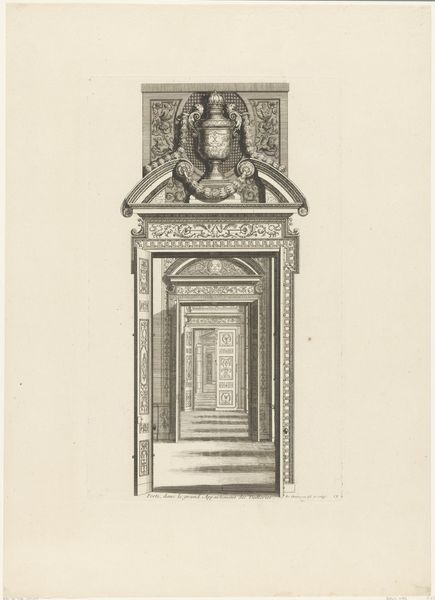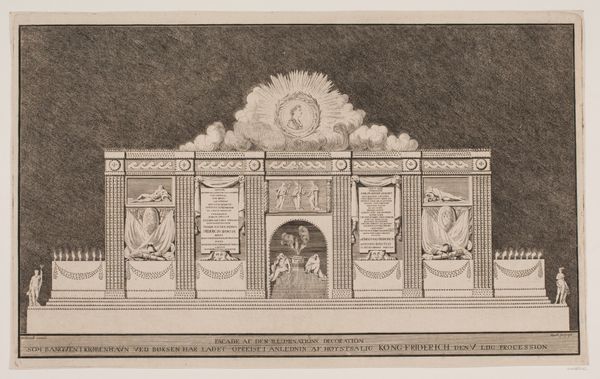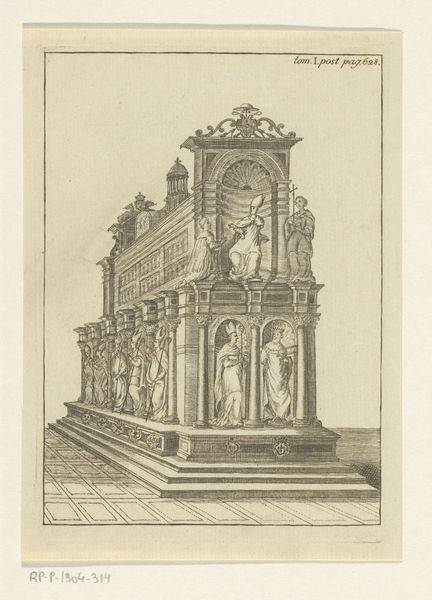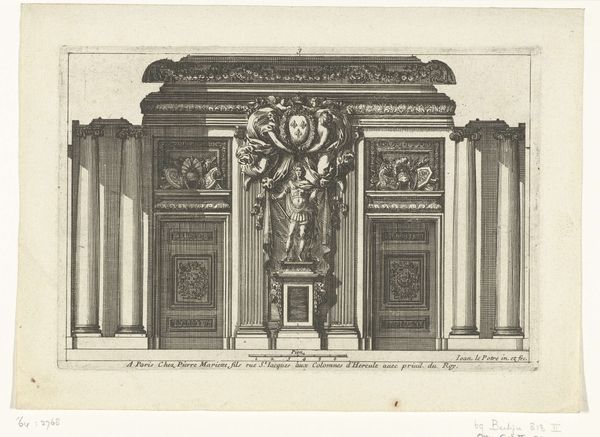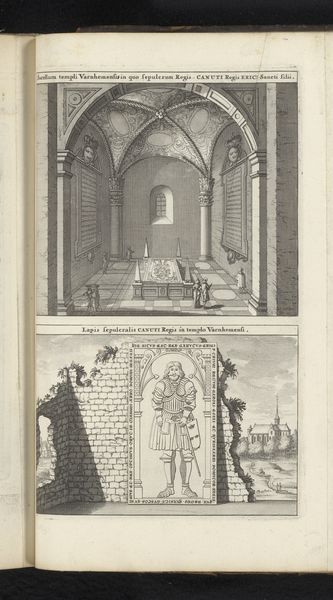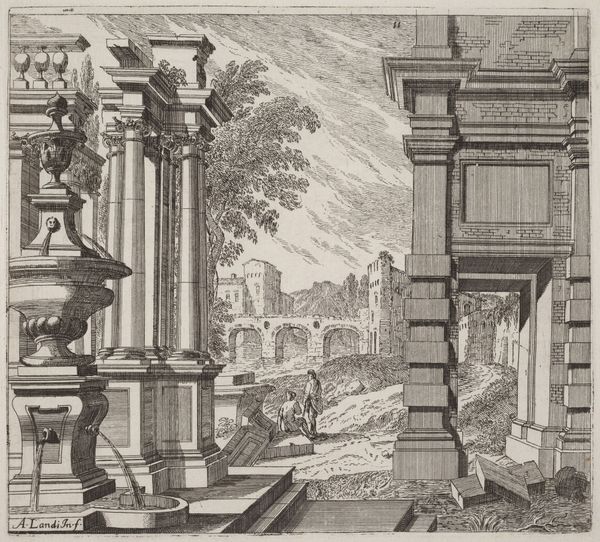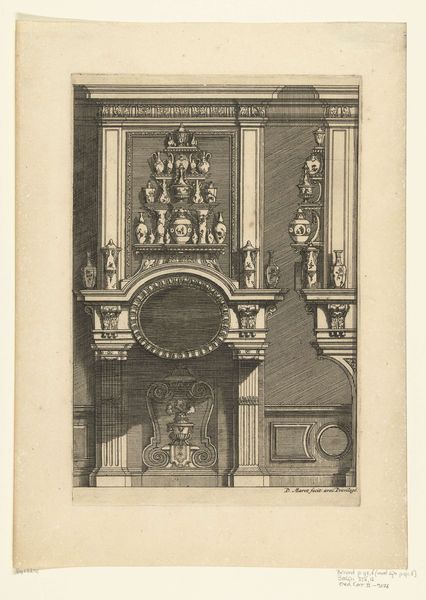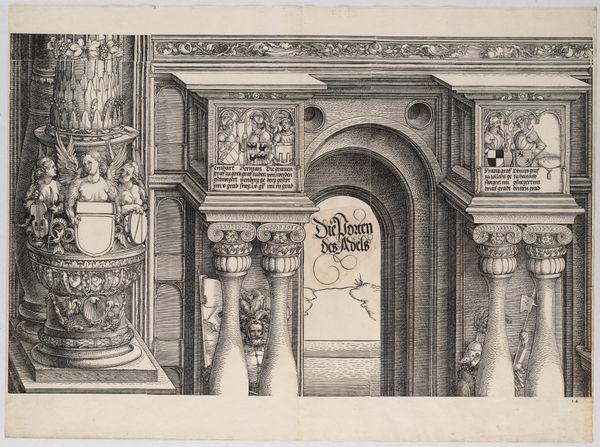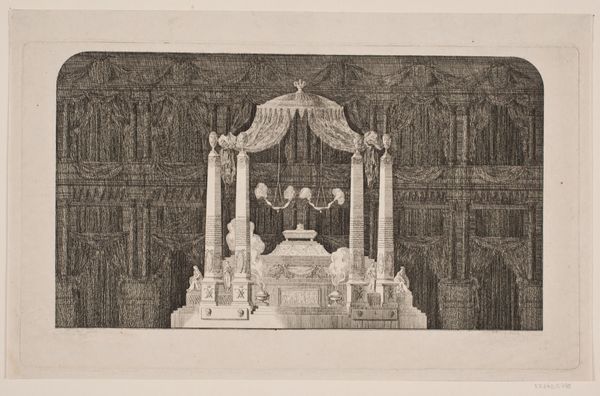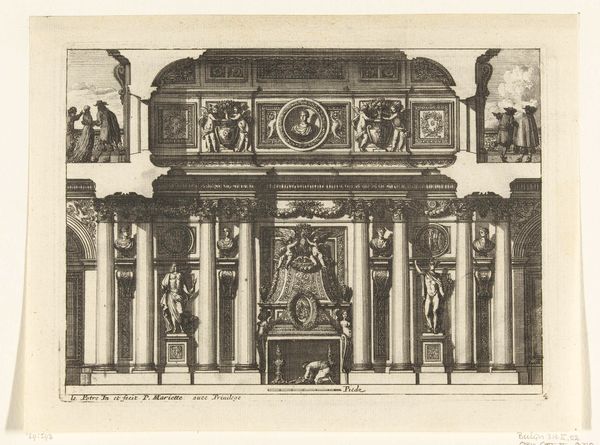
print, engraving, architecture
#
baroque
# print
#
landscape
#
decorative-art
#
engraving
#
architecture
Dimensions: height 182 mm, width 269 mm
Copyright: Rijks Museum: Open Domain
Editor: So, here we have Daniël Marot's "Arch of trellis work and garden pavilion in Rosendael," created in 1702. It’s an engraving. What strikes me is the contrast: this incredibly ornate archway on the left versus the more severe geometry of the pavilion. How do you interpret that juxtaposition? Curator: It’s like two halves of a dream, isn't it? Marot, he’s playing with Baroque sensibilities, the love of decoration and grandeur. This print captures a vision of idealized leisure, doesn’t it? But notice how both scenes offer a form of controlled nature. What do you think about the implied social activities within these architectures? Editor: That's interesting. I hadn't considered it that way, but yes, it feels performative. As if they’re stages for elaborate social rituals. Curator: Precisely! And the act of creating such spaces, the resources and labour required, all speaks to the power and status of those who commissioned it. The pavilion, perched high, surveying the land; the archway, a theatrical entrance. One wonders about the conversations, the stolen kisses… what secrets these carefully constructed landscapes have overheard! Editor: Now I'm picturing it – ladies in powdered wigs, secret rendezvous... Curator: Exactly! But also, think about the labour involved. These weren’t democratic spaces; they were built on privilege, literally and figuratively. That tension between beauty and social reality is what makes this print so compelling for me. What about you, any different impression? Editor: I hadn't thought of that labour side of things... But that element of privilege really casts the whole thing in a new light for me! Thanks! Curator: Indeed. Every delightful artwork carries shadows within, and that's where much of art's potency arises, don’t you concur?
Comments
No comments
Be the first to comment and join the conversation on the ultimate creative platform.
